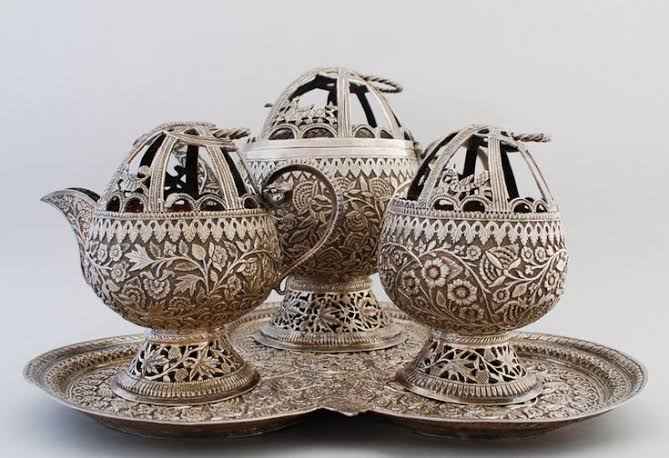
The timeless art of Filigree in Kashmir is on the brink of extinction, with most skilled artisans opting for other livelihoods due to its dwindling demand.
Only a handful of dedicated artisans continue to practice this intricate craft, and they voice concerns that without government intervention, this cherished art form may fade away.
Artisans deeply rooted in Filigree craftsmanship shared their concerns with the news agency—Kashmir News Observer (KNO).
Tariq Ahmad, a Filigree artist from the Raiteng area of Srinagar, said he has dedicated four decades to this art, passed down through generations. He, however, laments the diminishing number of practitioners over the years.
Filigree, as the name suggests, is an art that revolves around threads and grains.
The process of crafting Filigree jewellery is painstaking, with silver or gold bars melted and transformed into fine wires, often extending for a kilometre from just a gram of metal.
Tariq recalled that his family, including his grandfather, engaged in Turkwaaz work, a craft akin to Filigree. In the past, Filigree enjoyed a robust demand, but this has waned due to inflation, and now, only art enthusiasts seek out Filigree pieces, he lamented.
He said the government should initiate a revival of this dwindling craft, asserting that the survival of Filigree hinges on such intervention.
“Presently, the demand for Filigree is minimal, primarily attracting a few tourists, and only a handful of artisans remain. The imminent passing of these artisans would spell the end of this art form,” he said.
The craftsman said that Filigree is a complex handcrafted jewellery art, and dates back to the 6th century BC, with origins in Greece and Etruria, subsequently spreading to Italy, Egypt, India, and Armenia.
Tariq acknowledged that financial constraints have limited his ability to launch large-scale training initiatives for the younger generation.
He underscores the indispensable role of government intervention in rescuing this dying art.
“Had I been financially sound, I would have started training youth, so I believe only the government can revive this dying art,” he said.
Mohammad Mubasir Kathwari, who has managed a shop in Poloview, Srinagar since 2000, inherited it from his grandparents. He echoes the sentiment that the Filigree art’s demand has waned due to low production and a decrease in foreign tourist visits in recent years.
The availability of machine-made Filigree from Orrisa contrasts with the rarity of handmade Filigree in Kashmir, he said.
He pointed out that Filigree is an intricate, costly art, with limited appeal to tourists. However, an increase in tourist arrivals, especially foreign tourists, could potentially rejuvenate demand for this cherished Kashmiri craft, he said.
As the Filigree art struggles for survival, artisans and enthusiasts await proactive steps by the government to ensure the legacy of this ancient tradition endures in Kashmir—(KNO)
